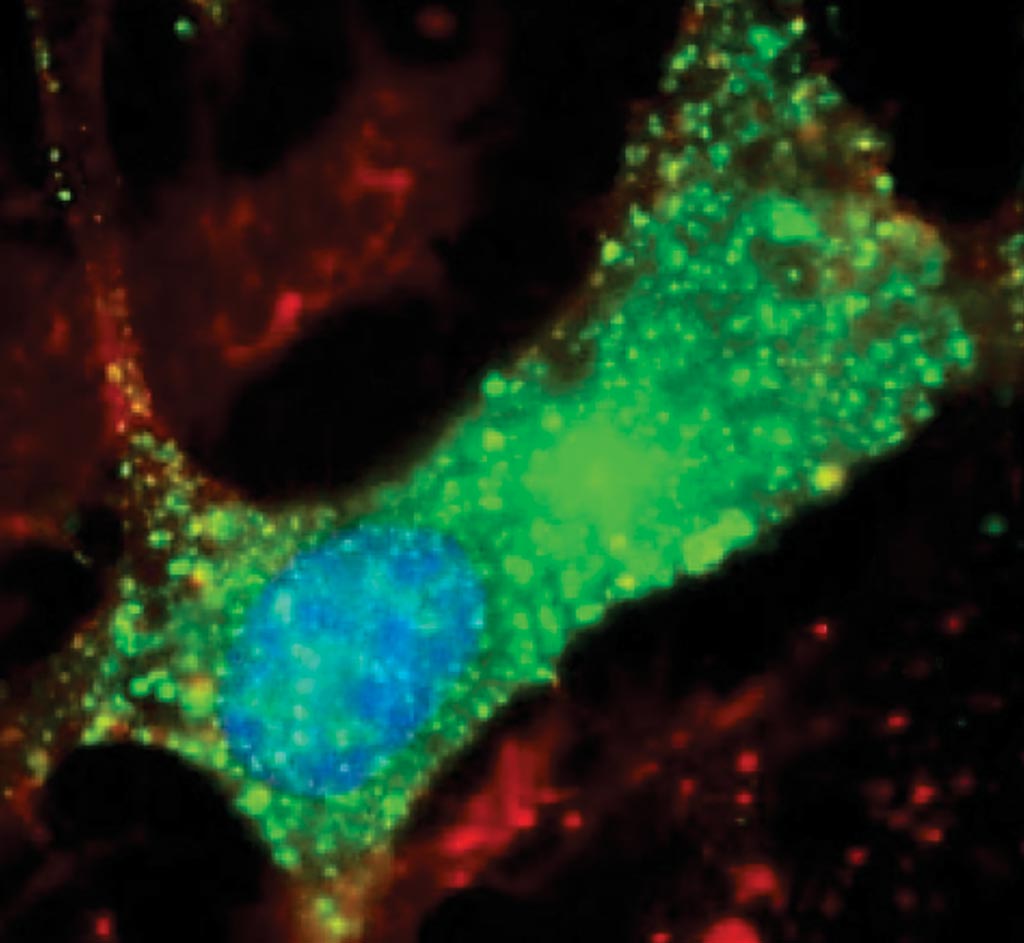Nodding Syndrome Linked to Worm Protein
By LabMedica International staff writers
Posted on 02 Mar 2017
Nodding syndrome is a form of epilepsy that occurs in children between the ages of 5 and 16 who live in distinct regions of Tanzania, Uganda and the Republic of South Sudan.Posted on 02 Mar 2017
Nodding syndrome is characterized by head nodding, seizures, severe cognitive deterioration and stunted growth and may lead to malnutrition and patients have died through seizure-associated traumas such as fatal burns and drowning.

Image: New clues to Nodding syndrome: scientists discovered antibodies to leiomodin-1 (green) inside human brain cells. This study suggests that Nodding syndrome may be an autoimmune disease (Photo courtesy Dr. Avindra Nath, MD).
Scientists at the National Institutes of Health and their colleagues compared serum samples from patients with Nodding syndrome and healthy controls who all lived in the same village in Uganda. They hypothesized that nodding syndrome may be an autoimmune-mediated disease. They used protein chip methodology, and detected autoantibodies to leiomodin-1 more abundantly in patients with nodding syndrome compared to unaffected controls from the same village.
Leiomodin-1 autoantibodies were found in both the sera and cerebrospinal fluid of patients with nodding syndrome. To confirm that finding, the team examined brain tissue and found leiomodin-1 inside brain cells, notably in regions associated with symptoms of Nodding syndrome. Leiomodin-1 was found to be expressed in mature and developing human neurons in vitro. Furthermore, when healthy neurons in a dish were treated with serum from the patients and antibodies against leiomodin-1, they did not survive, but removing the antibodies increased brain cell survival. In addition, the group found that antibodies that bind to leiomodin-1 also attach to proteins from the parasitic nematode Onchocerca volvulus. Structurally, leiomodin-1 was shown to be very similar to specific proteins from that parasite.
The results of this study suggest that Nodding syndrome may be an autoimmune disease, in which the immune system incorrectly attacks the body’s own proteins. According to the scientists, the immune system creates antibodies to fight off the parasite following infection with O. volvulus. However, those antibodies also bind to leiomodin-1, so the immune system, incorrectly, will attack brain cells that contain that protein, which can result in symptoms of Nodding syndrome.
Avindra Nath, MD, clinical director of the s National Institute of Neurological Disorders and Stroke (NINDS) said, “This study identifies a cause of Nodding syndrome. But more broadly, these findings provide a novel perspective on epilepsy and suggest that some forms of this neurological disorder may be autoimmune in nature. The findings also suggest that therapies targeting the immune system may be effective treatments against this disorder and possibly other forms of epilepsy.” The study was published on February 15, 2017, in the journal Science Translational Medicine.













